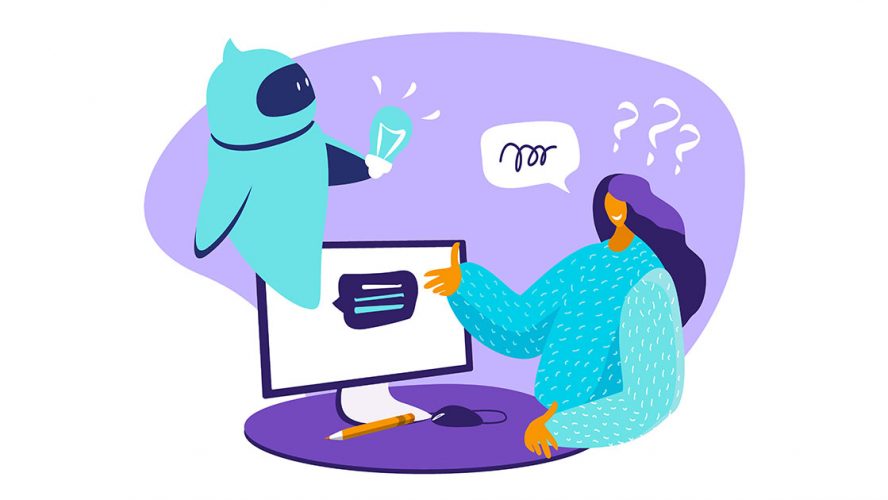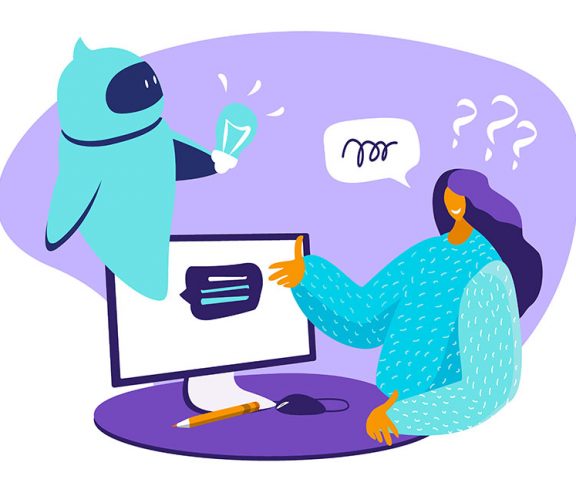As artificial intelligence (AI) technology becomes more advanced, and as chatbots become more sophisticated at solving individual problems, colleges and universities are finding more and more ways these systems can make life easier for both faculty and students.
Everyone is familiar with the old, basic chatbots that are little more than a waystation before you reach a customer service representative, but Ivy.ai CEO Mark McNasby says his company is integrating these systems to serve a variety of student needs, as well as for marketing purposes.
“Student service plays into the larger picture of student success and student retention,” McNasby said. “So this is a critical piece of the bigger picture of driving students to graduate and having successful outcomes.”
McNasby provided an example of how chatbots can be used to solve very specific student problems:
“Summer melt is a classic problem in higher education, where students say that they’re going to enroll, but they don’t show up on the first day of classes,” he said. “And it’s because they maybe don’t have the support they need to complete all of the required work in terms of medical forms or financial aid forms. And so AI chatbots can provide that support and walk people through these complex processes that get them to the finish line.
Answering questions
In another example, a student might ask a chatbot about their tuition balance. McNasby says there are chatbots designed to access that student’s financial aid file, provide them with the balance, and links to payment options.
For more complex or specific questions involving named entities, like “Who is my student adviser?” McNasby says chatbots find creative algorithmic solutions to best answer students’ questions.
“So if I’m an economics major, I want to be talking to Jodie Smith. And if I’m a physics major, I want to be talking to Dan Brown, right? And so one of the things that we can do is if a student asked the question, ‘Who’s my advisor?’ Well, we can say, ‘Well, what’s your major?’ McNasby said. “And then, based on their response, we can connect them to either Jodie or Dan.”
But even the smartest chatbot is not perfect, which is why McNasby says it’s important to have a smooth function for transferring a student to a live person when the bot doesn’t have an answer.
“Because these bots are not omniscient. They’re not silver bullets,” McNasby said. “And the experience of when the bot gets stumped is really important because we only have a person’s eyeball for a few minutes, and when they have a lousy experience with it, they never come back.”
Personalized experience
McNasby said offering personal integrations and a more personalized experience is definitely a chatbox trend he’s been noticing lately. Another thing he said he’s seeing more of is offering AI technology on more and more platforms.
“So in addition to offering it on the website, people can also access it on Facebook Messenger or over SMS, or over email or Amazon Alexa,” McNasby said. “And so the ability to engage with the same AI across these different channels, schools are moving in that direction.”
University websites are also getting more creative with how content on the site interacts with the bot.
“So they might have a webpage that has content on it, and when I click on a piece of content, it will actually open up the bot to the specific area that talks more about it,” McNasby said. “It’s this sort of interplay, this sort of closer connectivity between their website and within the bot’s brain.”
McNasby is excited about the latest developments in AI technology and what it can do for universities and their students. And it’s clear this is just the beginning.

